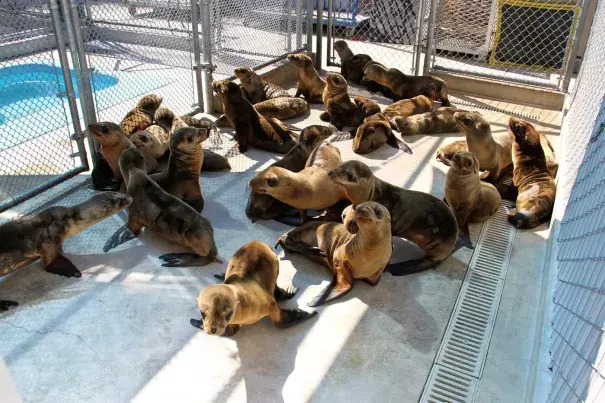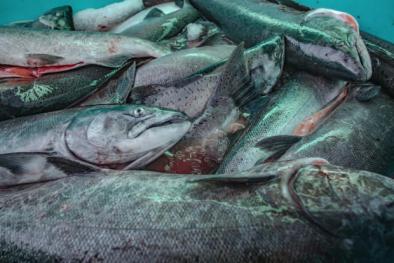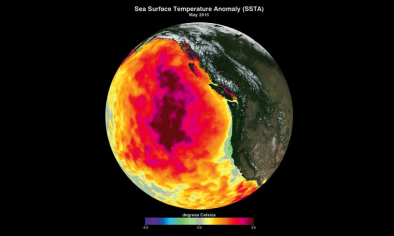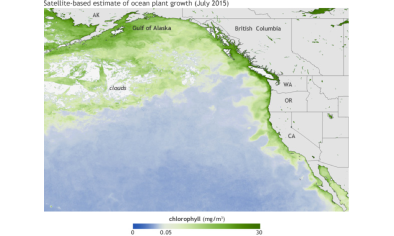‘The Blob’ Is Back: What Warm Ocean Mass Means for Weather, Wildlife

The blob is back.
Since 2014, a mass of unusually warm water has hovered and swelled in the Pacific Ocean off the West Coast of North America, playing havoc with marine wildlife, water quality and the regional weather.
Earlier this year, weather and oceanography experts thought it was waning. But no: The Blob came back, and it is again in position off the coast, threatening to smother normal coastal weather and ecosystem behavior.
The Blob isn’t exactly to blame for California’s drought, though it certainly aggravated the problem. But it is to blame for seriously disrupting the ocean food chain and for creating conditions that fed unprecedented algal blooms in the coastal Pacific.
With the Blob back in play again, what does it mean for the winter ahead? To find out, Water Deeply spoke with Nicholas Bond, a research meteorologist at the University of Washington in Seattle and Washington’s state climatologist. In June 2014, Bond named this persistent weather phenomenon, and later wrote the first scientific paper characterizing it.
Related Content





